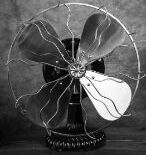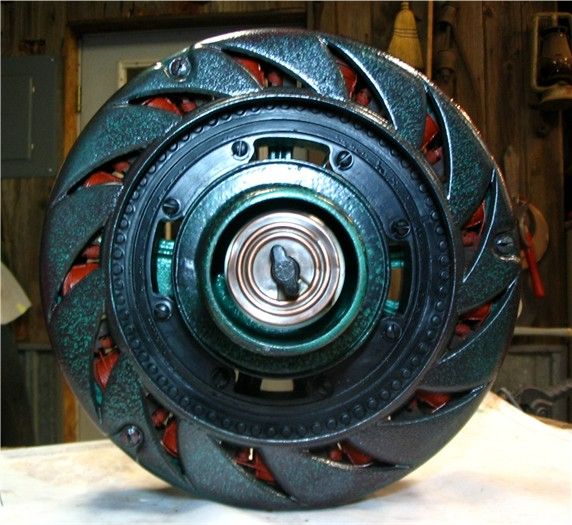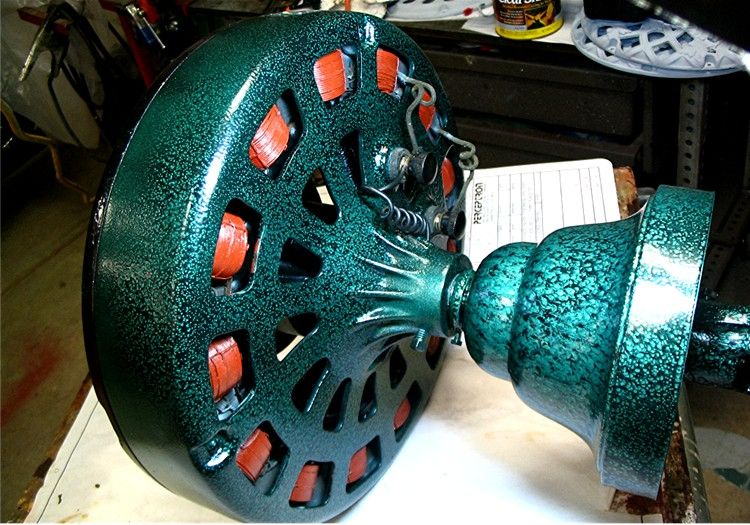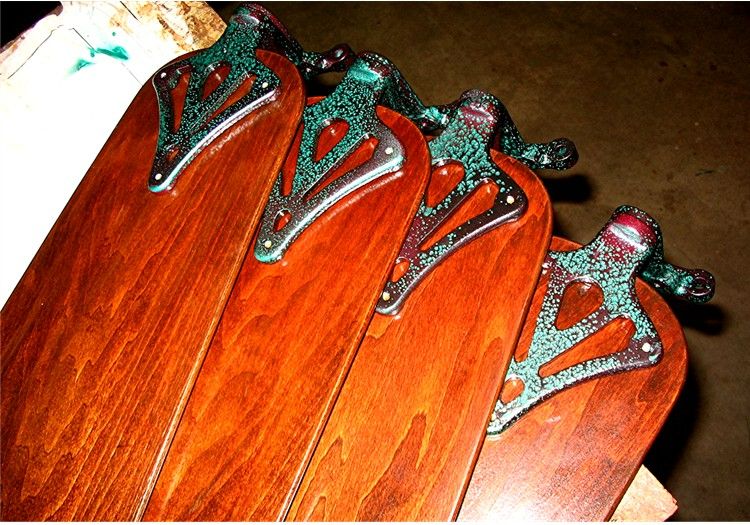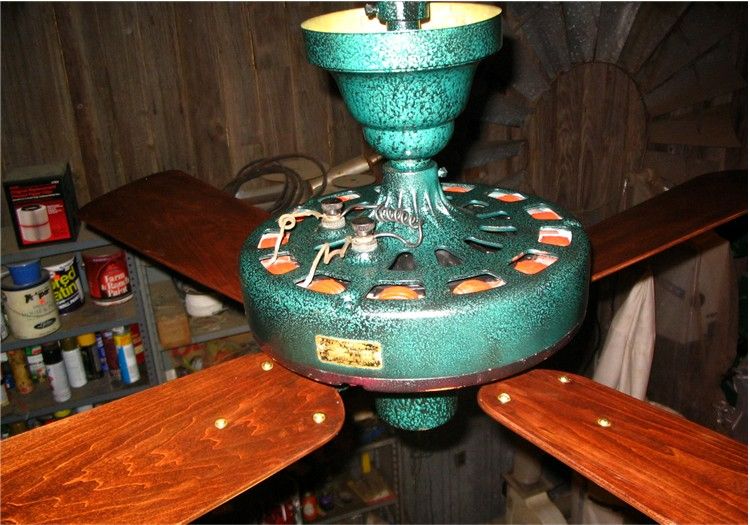Leaderboard
Popular Content
Showing content with the highest reputation on 10/25/2022 in all areas
-
We closed the museum doors on October 14th for three weeks. We have taken in over 250 antique fans in the last couple of months and were running out of places to put them. With some measuring, we concluded we could add one more row of display cases. This entailed building some longer wood shelves, and freed up the 6 existing display cases needed. We started with the Emerson aisle, taking every fan down, removing the glass and wood shelves, and moving them about 6 inches closer to the GE aisle. It is now 31 inches wide, a bit closer for that up close and personal viewing of fans. All the existing rows were done the same way and when all were moved, we had the room for the extra row. As you can see, we have a lot of new empty shelves just waiting for members fans to be displayed. We have a row of nothing but oscillating fans. We still need an Emerson 2210/2220 and a Century S-4, but have a pretty comprehensive showing of how oscillation designing progressed. We'll be doing a separate section for coin ops by GE and W/H. We can still use more Emersons (didn't think I'd ever hear myself say that) especially the earlier stuff. Century isn't represented much either. If you'd like to have a fan from your collection on display in the AFCA museum, give me a shout. After this, we'll be going upstairs and reorganizing the layout and adding more fans. The next time you visit, you'll see a different museum with a lot more to look at on both floors. The first five pictures show the museum as it was and then being broken down. The rest show the finished project except for some finessing here and there. Come visit us and check it out.4 points
-
1 point
-
The diameter of required wire is determined by the voltage, amperage, and length of wire for the most part. Very short wires can be very small diameter without problem. For the vast majority of desk fans of any voltage, 20 or 22 gauge wire of about a foot long poses no problems whatsoever.1 point
-
1 point
-
1 point
-
1 point
-
This is the one I bought, I'm happy with it. It holds about 5 lbs of media, you can fit all your parts in there and not too expensive. https://www.amazon.com/Frankford-Arsenal-Quick-N-EZ-Vibratory-Separator/dp/B07YXCFMB2 The 320 grit media I use is this, I run it overnight on all my old rusted metal (and brass) and it has a nice cutting action, but I'm not sure if it would take down the stainless steel the way you want... https://www.amazon.com/Tumbling-Vibratory-Vibrating-Rotating-Tumblers/dp/B07CV7B9NZ There is a 220 grit media that might work better for you needs... https://www.amazon.com/Plastic-Tumbling-Vibratory-Vibrating-Rotating/dp/B08N3H3ZQX Personally, I would probably start with the following... https://www.amazon.com/Ceramic-Triangular-Deburring-Edge-Rounding-Stainless/dp/B07FB1H15C1 point
-
Yes, this one is a keeper. I am planning to make a wooden enclosure for it and use it in the garage during the long Gulf coast Texas summers.1 point
-
If you want to run a fan from battery, something such as this would be ideal. https://gpelectric.com/products/1500-watt-industrial-pure-sine-wave-inverter/ It will follow the normal rules of any transformer-like device. With 12V input and 120V output, it has a 10:1 ratio. In other words, the voltage is multiplied by 10 as viewed going from the battery to the load; and the current is multiplied by 10 as viewed from the load to the battery. Watts of real-power will remain the same, minus the 5% efficiency loss. So, a resistive load such as a light bulb which draws 1 amp at 120V from the inverter will cause the inverter to draw 10 amps at 12V from the battery; plus efficiency losses. A 10 amp resistive load such as a coffee maker requires 100 amps from the battery, plus efficiency losses. AC Motor loads (even series / universal motors) have an inductive nature which can damage cheap inverters, but works well with pure-sine inverters. To predict the battery current demand for a motor through an inverter, you need to know the watts of power demand for the motor. Then use the formula: ([Motor Power] / [battery Volts]) / [Inverter efficiency] = [Battery Amps] Motor Power is Watts as measured by a watt-meter which is aware of power factor; such as a Kill-A-Watt meter. This is not amps nor VA; and one cannot measure volts and amps separately to calculate this with an AC motor of any type. Inverter Efficiency is per-unit efficiency. If the inverter claims a 95% efficiency that is 0.95 per-unit. Per-unit (PU) is simply percent divided by 100. PU is "per one" whereas percent is "per 100." PU a common unit of measurement with electrical parameters. Most of the vintage tabletop fans use less than 100W, often a lot less. If your fan uses 40W of power, and your inverter is powered by a 12V battery, you can use the formula as follows: 40 W Power (measured with Kill-A-Watt) 0.95 Efficiency (from inverter documentation) 12V Battery (nominal battery voltage) (40/12)/0.95=3.51 Therefore, to run a fan requiring 40W from a 95% efficient inverter from a 12V battery, the battery will have to supply about 3.5 amps. For a 100W fan, you would be using about 8.8 A from the battery. If you have a fully charged 100AH 12V deep-cycle battery, it can supply 5A for 20 hours, based on the normal way they are rated. The higher the rate of discharge the less of the energy you recover from the battery, but if you stay within the current range for a 10 to 20 hour discharge, they reasonably hold true to the following formula: Run Time = (battery capacity) divided by (battery current) For the two examples of fans above, the 100AH 12V battery would support the fan as follows... 100 AH battery 40W fan 12V battery 95% efficient inverter 100/((40/12)/0.95)=28 hours 100 AH battery 100W fan 12V battery 95% efficient inverter 100/((100/12)/0.95)=11 hours (or slightly less because this is a higher rate of discharge than the 20 hour rate upon which the battery is rated) These numbers are just approximations, but they are probably "in the ballpark" for for not having actual equipment to test. Hope y'all found this interesting! 🙂1 point
-
those are beautiful and powerful fans. I've had one running flawlessly every summer in the shop for the past 26 years. blades & brackets do show up if U R watching and waiting.1 point
-
Richard, you got a small block Chevy? And a whole house fan with no motor? combine that into the hot rod shop fan1 point


